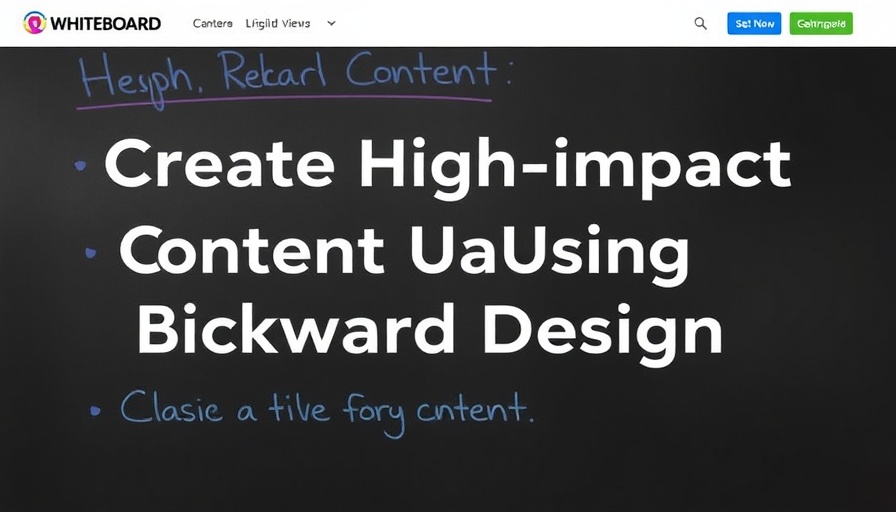
Unlocking the Power of Backward Design in Content Creation
What if you could significantly enhance your content marketing efforts by simply reversing your approach? Enter backward design, a revolutionary process that places measurement at the forefront of your strategy, ensuring your small or medium-sized business generates high-impact content aligned with your goals. In today's fast-paced digital landscape, where content saturation is rampant, knowing how to create engaging and relevant content is more crucial than ever.
What is Backward Design and Why Should You Care?
Backwards design means starting with the end in mind. Just as an athlete visualizes victory before stepping onto the field, marketers should envision their desired outcomes before crafting content. This intentional framework, borrowed from instructional design, mandates that you focus on your business objectives first. For small and medium-sized enterprises, this is vital; every marketing dollar counts and every piece of content should drive towards measurable success.
Steps to Implement Backward Design in Your Content Strategy
Here’s how you can leverage backward design in your content creation and marketing efforts:
- Define Success: Identify the key performance indicators (KPIs) that matter most to your business. This might mean increased web traffic, more leads, or better conversion rates.
- Create Targeted Content: Once you’ve established what success looks like, tailor your content to achieve those metrics. This could involve engaging storytelling, compelling visuals, or actionable tips.
- Measure Progress: Utilize analytics tools to track performance against your KPIs. Regularly check these metrics to see what is working and what isn’t, so you can adjust your approach accordingly.
Real-World Applications: How Businesses Are Winning with Backward Design
Consider a local coffee shop aiming to boost sales. By employing backward design, they might start with a goal of increasing customer loyalty. They create content that emphasizes community engagement—stories highlighting local farmers or promoting in-house events. This targeted approach not only resonates with their audience but drives measurable results.
Counterarguments: Understanding Diverse Perspectives
While backward design advocates prioritize planning and measurement, some critics argue that too rigid a framework may stifle creativity in content marketing. However, this isn’t about enforcing restrictions but rather about channeling creative energy towards strategically impactful directions.
The Future of Content Marketing: Bridging Strategy with Creativity
Looking ahead, balancing structured approaches like backward design with creative storytelling will likely dictate the future of content marketing. Marketers who can blend analytical thinking with innovative content creation will carve out competitive advantages in their industries. In a world where consumers are bombarded with content, those who step back and measure impact thoughtfully will surely prevail.
Practical Tips: Bringing Value to Your Backward Design Strategy
To ensure your content resonates, here are some essential tips:
- Stay Consistent: Maintain a consistent voice and message across all content platforms.
- Engage Your Audience: Create opportunities for interaction, whether through social media or direct feedback channels.
- Iterate on Feedback: Use audience insights to refine your content and approach continuously.
Unlock Your Potential with Backward Design
The journey to effective content marketing starts with a reverse mindset. By integrating backward design into your strategy, small and medium-sized businesses can create high-impact content that not only engages but also drives tangible results. Embrace this approach to refine how you reach your audience, fulfill your objectives, and set your brand up for long-term success.
Don’t fall into the trap of reactive marketing—take charge by implementing backward design today. Evaluate your current processes, set clear outcomes, and watch your content efforts thrive. Transform your marketing campaigns by starting with tangible goals and let those insights guide your storytelling. Your audience—and your bottom line—will thank you!
 Add Row
Add Row  Add
Add 



Write A Comment